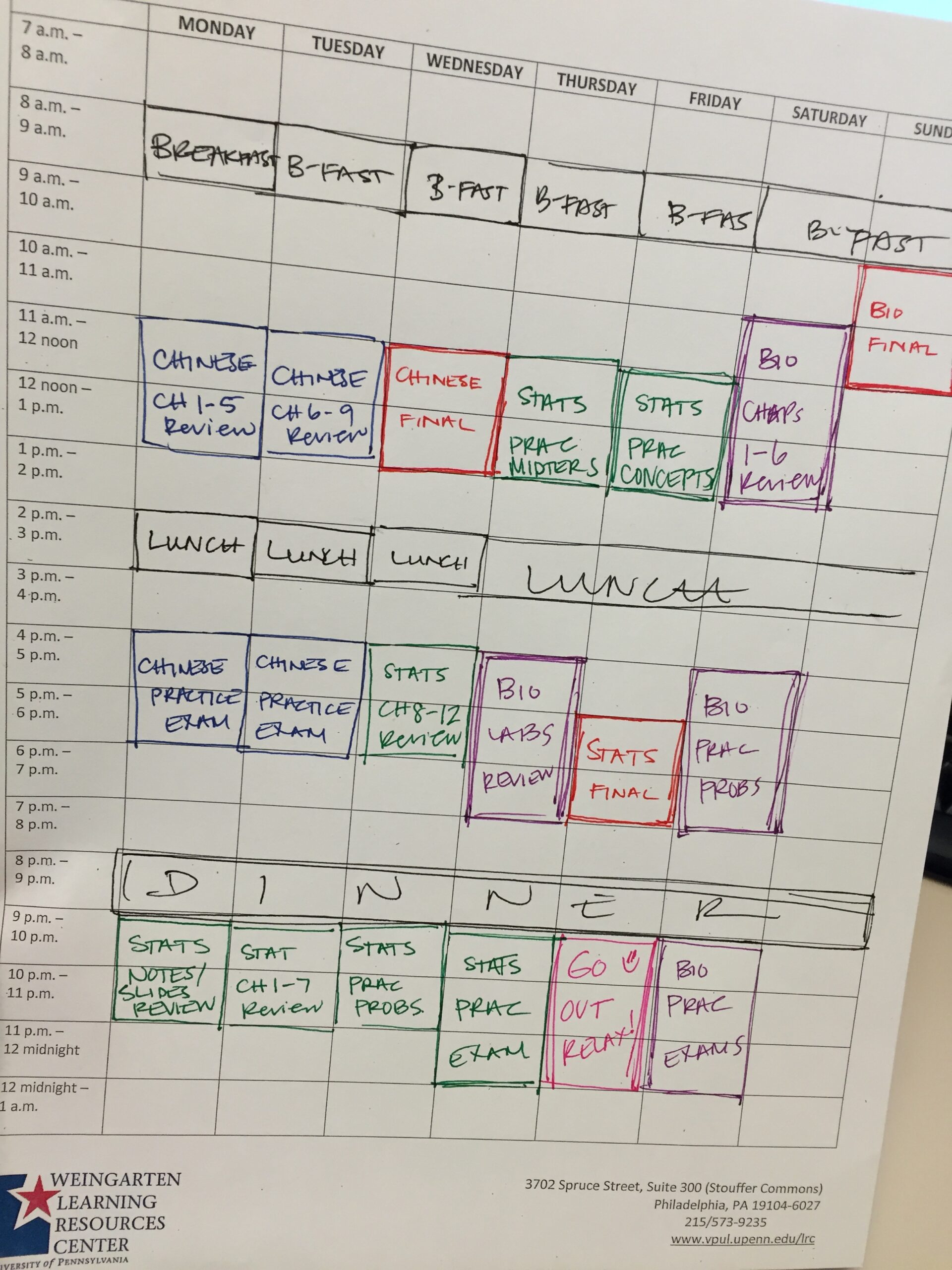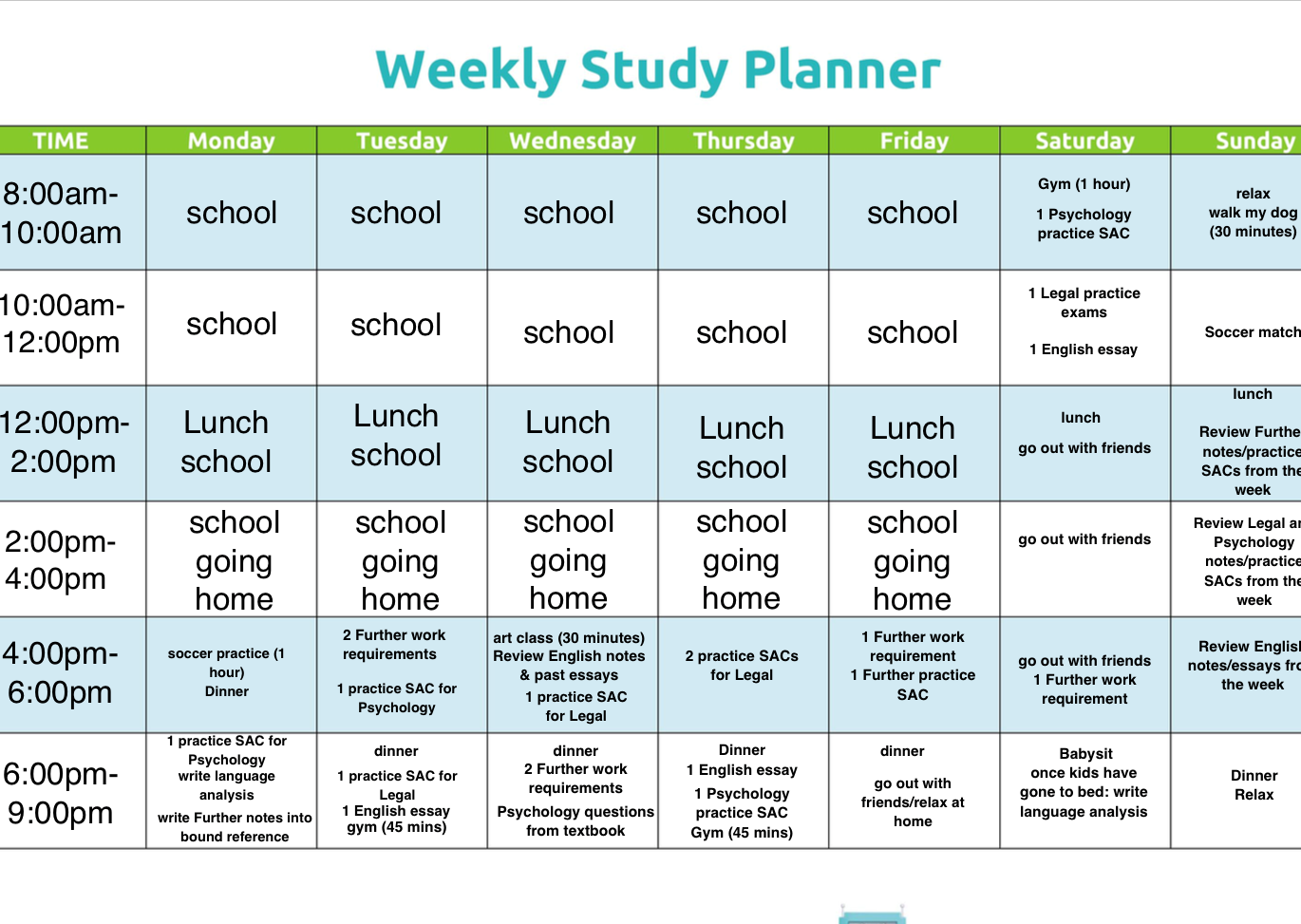How to Create the Perfect Study Schedule for Maximum Productivity
Creating an effective study schedule is essential for academic success. Whether you’re in high school, university, or preparing for exams, having a structured study plan can help you stay organized, reduce stress, and improve your performance. In this article, we’ll explore how to build a study schedule that works for you and helps you reach your academic goals.

1. Why a Study Schedule is Important
A study schedule provides structure and discipline to your study routine. Without a proper plan, it’s easy to procrastinate, become overwhelmed, or miss deadlines. A well-thought-out schedule helps you allocate time for different subjects, prioritize tasks, and ensure that you’re covering all necessary topics.
Benefits of a Study Schedule
-
Improved Time Management: A study schedule helps you make the most out of your available time.
-
Reduces Stress: Knowing exactly what you need to do and when makes studying less stressful.
-
Prevents Procrastination: A clear plan eliminates the temptation to delay studying.
-
Boosts Productivity: When you have a plan, you stay focused and make the most of your study time.
Having a study schedule helps you stay on track and prevents last-minute cramming.
2. How to Create a Study Schedule
Creating a study schedule may seem daunting, but it’s easier than you think. The key is to break down your tasks into manageable chunks and prioritize effectively.
Step 1: Set Clear Goals
Before you start organizing your study schedule, it’s important to set specific, measurable, and achievable goals. Define what you want to accomplish each day, week, and month. This could include studying for a specific exam, completing assignments, or mastering a particular subject.
Step 2: Assess Your Time Availability
Take a look at your daily and weekly schedule. Identify when you have free time and when you’re most alert and productive. If you’re a morning person, schedule your most demanding tasks in the morning, and if you’re more energetic in the evening, plan your study sessions accordingly.
Step 3: Break Your Study Time into Blocks
Instead of cramming for hours, break your study sessions into manageable blocks. The Pomodoro Technique—working for 25 minutes followed by a 5-minute break—is a great way to stay focused and avoid burnout. For longer study sessions, extend the break times and work for 50-60 minutes.
Step 4: Prioritize Tasks
Not all subjects or tasks require the same amount of attention. Prioritize difficult or important subjects during your peak productivity times. Also, make sure to spread your studying across subjects to avoid burnout in any one area.
Step 5: Be Flexible
While it’s important to stick to your schedule, don’t be too rigid. Life happens, and sometimes you may need to adjust your plans. Allow for some flexibility in your schedule so you can adapt if something unexpected comes up.
3. Tips for Creating an Effective Study Schedule
Now that you know how to create a study schedule, here are some tips to make it more effective:
Plan for Breaks
Don’t forget to include regular breaks in your study schedule. Your brain needs time to rest and recharge. Studies show that taking short breaks during study sessions helps improve focus and retention.
Mix Up Your Study Environment
Changing your study location can help boost your productivity. Whether it’s a quiet library, a coffee shop, or your room, vary your surroundings to keep your mind engaged.
Include Review Time
Reviewing what you’ve learned is crucial for long-term retention. Make sure to allocate time at the end of each study session for revision and recap.

Use Digital Tools
There are many apps and online tools to help you create and track your study schedule. Tools like Google Calendar, Trello, or Notion can help you organize your tasks, set reminders, and monitor your progress.
Stay Consistent
Consistency is key to making your study schedule work. Try to stick to your schedule as much as possible. The more consistently you follow your study plan, the easier it becomes to manage your time and meet your goals.
4. Create a Balanced Schedule
It’s essential to balance your study schedule with other important activities like exercise, socializing, and relaxation. Overloading yourself with study time can lead to burnout, so make sure your schedule includes time for these activities as well.
How to Balance Study and Life
-
Set Boundaries: Don’t let study time take over your entire day. Set boundaries for when to start and stop.
-
Prioritize Self-Care: Make time for sleep, exercise, and hobbies. These are essential for maintaining mental and physical well-being.
-
Socialize: Schedule some time with friends and family to relax and recharge.
By creating a balanced study schedule, you’ll prevent burnout and stay motivated throughout your academic journey.

5. How to Stay Motivated While Sticking to Your Study Schedule
Staying motivated is one of the biggest challenges students face when trying to follow a study schedule. Here are some tips to help you stay on track:
Set Small Milestones
Rather than focusing on the end goal, break down larger tasks into smaller, manageable milestones. Celebrate each small victory to maintain motivation.
Reward Yourself
After completing a study session or hitting a milestone, reward yourself with something enjoyable. It could be a break, a treat, or a fun activity you enjoy.
Stay Positive
Don’t be too hard on yourself if you miss a study session or struggle to stay focused. Maintaining a positive attitude and staying flexible will help you bounce back quickly.
6. Example of a Study Schedule
Creating your own study schedule might feel overwhelming, so here’s a sample schedule to help guide you:
-
Monday to Friday
-
8:00 AM – 9:00 AM: Review notes from yesterday
-
9:00 AM – 12:00 PM: Study for Subject A
-
12:00 PM – 1:00 PM: Lunch Break
-
1:00 PM – 3:00 PM: Study for Subject B
-
3:00 PM – 5:00 PM: Practice problems or assignments
-
5:00 PM – 6:00 PM: Break or exercise
-
6:00 PM – 8:00 PM: Study for Subject C
-
8:00 PM – 9:00 PM: Relaxation or social time
-
-
Saturday
-
9:00 AM – 11:00 AM: Review week’s notes
-
11:00 AM – 12:00 PM: Practice mock exams
-
Afternoon: Free time or social activities
-
By following a similar schedule and customizing it to your needs, you can maximize your productivity and improve your academic performance.
FAQs About Study Schedules
1. How long should each study session be?
It depends on your personal preferences and attention span. However, a good rule of thumb is to study for 50-60 minutes and take a 10-15 minute break.
2. Should I stick to my study schedule even if I don’t feel like studying?
It’s important to stay consistent with your schedule, but don’t push yourself too hard. If you’re feeling mentally exhausted, take a break and resume when you feel refreshed.
3. How can I stick to my study schedule?
Stay committed by setting realistic goals, using reminders, and making your study time enjoyable. Track your progress and reward yourself for sticking to your plan.
4. How do I balance my study schedule with other activities?
Prioritize your tasks, but also make sure to set aside time for self-care and relaxation. Create a balanced schedule that includes breaks and activities outside of studying.
5. Can I change my study schedule if it’s not working for me?
Yes! Your study schedule should be flexible. If something isn’t working, adjust it to fit your needs and lifestyle better.
Conclusion
Creating an effective study schedule is one of the best ways to boost your academic performance. By setting clear goals, organizing your study time, prioritizing tasks, and staying consistent, you can make the most of your study time and avoid procrastination. Remember to include breaks, balance your schedule with other activities, and stay motivated to succeed. With these tips, you’ll be on your way to achieving your academic goals.









